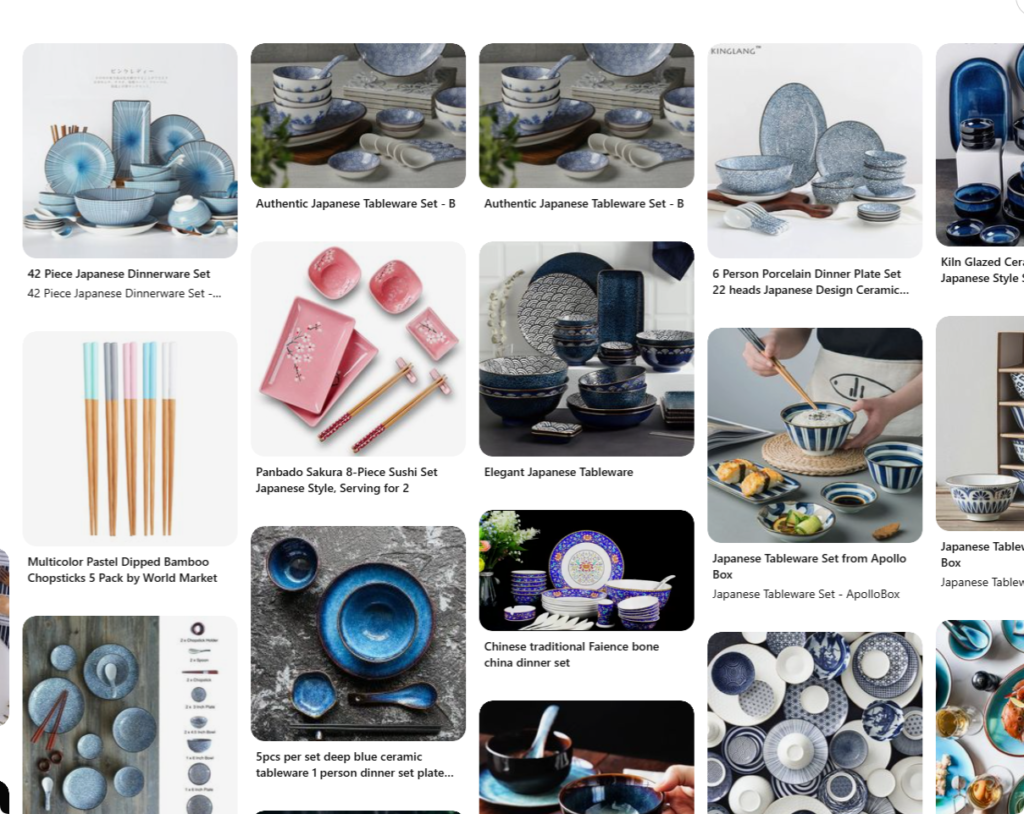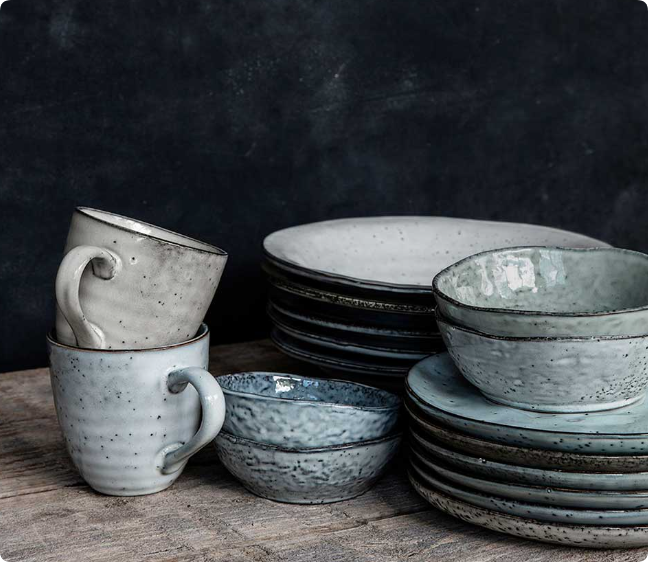In recent years, Asian markets have increasingly played a pivotal role in shaping the future of ceramic dinner sets. From influencing design trends to driving global demand, the rapidly evolving consumer preferences in countries like China, India, Japan, and South Korea are significantly impacting the ceramic dinnerware industry. This article delves into how these markets are contributing to the transformation of ceramic dinner sets, examining key trends, challenges, and opportunities for manufacturers, retailers, and suppliers in the global market.
Table of Contents
- Introduction to the Asian Market’s Influence on Ceramic Dinner Sets
- Key Drivers Behind the Rise of Ceramic Dinner Sets in Asia
- Trends in Ceramic Dinnerware Design Driven by Asian Markets
- The Role of Sustainability and Innovation in Ceramic Manufacturing
- Challenges Faced by Manufacturers in Adapting to Asian Market Demands
- Comparison of Key Markets in Asia: A Focus on Design, Consumer Preferences, and Trends
- Opportunities for Global Suppliers in Asia’s Ceramic Dinnerware Market
- Conclusion: The Future of Ceramic Dinner Sets in Asian Markets
- EKA’s Contribution to the Evolution of Ceramic Dinnerware
1. Introduction to the Asian Market’s Influence on Ceramic Dinner Sets
Asia, with its diverse cultures, growing middle class, and rapid economic development, has become a dominant force in shaping the global ceramics industry. The region’s ceramic dinnerware market, valued at billions of dollars, is experiencing significant growth. As a result, Asian consumer preferences, coupled with shifting societal trends, are influencing the designs, materials, and overall production processes for ceramic dinner sets worldwide.
While traditional designs remain popular in many Asian countries, there is a strong shift toward modern, functional, and aesthetically pleasing dinnerware. This transformation is driven by both the demand for luxury products and a growing emphasis on sustainability. Additionally, with Asia’s increasing participation in e-commerce, the demand for ceramics is not only being influenced by in-store purchases but also by online retail channels.
2. Key Drivers Behind the Rise of Ceramic Dinner Sets in Asia
Several factors contribute to the growing popularity of ceramic dinner sets in Asian markets:
- Economic Growth: With a growing middle class in countries like China and India, more consumers are seeking high-quality, durable dinnerware. This has led to an increase in demand for premium ceramic products.
- Cultural Shifts: In many Asian cultures, dinnerware is viewed as a status symbol. High-end ceramics are associated with hospitality, luxury, and tradition, and this perception continues to drive demand.
- E-commerce Growth: The rise of online shopping platforms like Alibaba, Amazon, and various regional e-commerce websites has significantly increased the accessibility and distribution of ceramic products.
- Sustainability and Eco-Consciousness: As environmental concerns continue to rise globally, consumers in Asia are increasingly opting for sustainable products, including eco-friendly ceramic dinnerware. This shift is driving innovation in the materials and production processes used in ceramics.
- Globalization and Western Influence: Western dining trends, including the adoption of casual dining and social media’s role in showcasing home decor, have influenced Asian tastes in dinnerware design.

3. Trends in Ceramic Dinnerware Design Driven by Asian Markets
The design of ceramic dinner sets is evolving rapidly, driven by changing consumer preferences in Asian markets. Here are some key trends:
- Minimalist and Modern Designs: Asian consumers are leaning toward sleek, minimalist, and modern dinnerware designs. Simple, clean lines with subtle patterns are becoming increasingly popular in countries like Japan and South Korea, where the concept of ‘less is more’ resonates with consumers.
- Customization and Personalization: As consumers demand more unique products, customization and personalization have become essential. Many manufacturers are now offering made-to-order ceramic dinner sets, allowing customers to choose their own colors, shapes, and patterns. This trend is particularly noticeable in the Chinese market, where consumer preferences are becoming more individualized.
- Multi-Functional and Space-Saving Products: In urban areas where space is limited, consumers prefer compact, stackable, and multifunctional dinner sets. These designs cater to modern lifestyles and are popular in cities like Hong Kong and Singapore.
- Natural and Organic Aesthetics: Inspired by nature, organic forms and earthy tones are becoming prominent in Asian ceramics. This trend aligns with the broader global movement towards sustainable and nature-inspired designs.

- Technology Integration: In countries like Japan, where technology plays an essential role in everyday life, ceramic dinner sets are being designed with functional elements such as built-in heating capabilities or designs that integrate with smart kitchen devices.
4. The Role of Sustainability and Innovation in Ceramic Manufacturing
Sustainability is becoming a crucial focus for manufacturers of ceramic dinner sets, especially in Asian markets. As environmental consciousness grows among consumers, ceramic manufacturers are adopting greener practices in production processes. These include:
- Use of Eco-Friendly Materials: Many manufacturers are shifting to sustainable materials such as recycled clay, lead-free glazes, and non-toxic paints to meet both consumer demands and regulatory standards.
- Energy-Efficient Manufacturing Processes: With rising energy costs and increasing environmental concerns, manufacturers in Asia are exploring energy-efficient kilns and reducing carbon emissions in the production of ceramic dinnerware.
- Durability and Longevity: Ceramics are highly durable and long-lasting, which appeals to consumers who are concerned with reducing waste. Manufacturers are increasingly highlighting the longevity of their products, positioning them as sustainable alternatives to single-use plastic or low-quality dinnerware.
- Research and Development (R&D): Companies are investing heavily in R&D to create innovative ceramic products that not only meet the needs of consumers but also support environmental sustainability. This includes developing lighter, stronger, and more heat-resistant ceramic materials.
5. Challenges Faced by Manufacturers in Adapting to Asian Market Demands
While there are many opportunities in the Asian ceramic dinnerware market, manufacturers face several challenges:
- Cultural Preferences: The ceramic dinnerware industry must consider the diverse cultural preferences across Asia. For example, in Japan, there is a preference for muted colors and elegant designs, whereas in India, consumers may favor vibrant, colorful patterns. Balancing these demands requires a deep understanding of regional tastes.
Biggest Ceramic Crockery Market in India/Best Design in Reasonable price
- Intense Competition: The Asian market is highly competitive, with both local manufacturers and international brands vying for market share. Companies need to offer high-quality products at competitive prices while also differentiating themselves through unique designs or sustainable features.
- Evolving Regulations: As Asian governments implement stricter regulations on manufacturing processes and product safety, manufacturers need to stay ahead of compliance requirements, especially when exporting to countries with stringent standards, such as the EU and the US.
- Price Sensitivity: While the demand for premium ceramics is rising, price sensitivity remains an issue in many parts of Asia. Manufacturers must find ways to balance high quality with affordability to meet the needs of price-conscious consumers.
6. Comparison of Key Markets in Asia
The table below compares the ceramic dinnerware market trends in key Asian countries, highlighting regional differences in design, material preferences, and consumer behavior.
| Country | Design Trends | Material Preferences | Key Consumer Demands | Market Challenges |
|---|---|---|---|---|
| China | Modern, minimalist with traditional touches | Porcelain, Bone China, Eco-friendly materials | Customization, luxury, and durability | Price sensitivity, cultural diversity |
| Japan | Minimalist, refined, nature-inspired | Porcelain, Stoneware | Elegance, craftsmanship, sustainability | High competition, niche market focus |
| India | Vibrant colors, intricate patterns | Ceramic, Clay, Eco-friendly options | Affordable, durable, and multi-functional | Regional disparities, cost control |
| South Korea | Sleek, modern with functional design | Porcelain, Stoneware | Compactness, multifunctionality | High production costs, small market size |
| Singapore | Simple, understated, functional | Porcelain, Ceramic, Eco-friendly | Space-saving, elegance | Price vs. quality balance |
7. Opportunities for Global Suppliers in Asia’s Ceramic Dinnerware Market
For global suppliers, Asia represents a vast and dynamic market with multiple opportunities:
- Access to a Growing Middle Class: As disposable income increases in many Asian countries, more consumers are opting for premium ceramic dinnerware, creating opportunities for manufacturers to offer high-end products.
- E-commerce and Online Retail: With the growth of online shopping, suppliers can reach consumers across Asia without the need for physical stores. Platforms like Taobao, JD.com, and Shopee offer manufacturers a direct route to the market.
- Collaborations with Local Designers: Collaborating with local designers can help foreign manufacturers understand cultural preferences and tap into the demand for customized, culturally relevant designs.
- Sustainability as a Selling Point: Suppliers who focus on eco-friendly materials and sustainable production methods will likely gain favor among Asian consumers, especially as environmental concerns continue to rise.
8. Conclusion: The Future of Ceramic Dinner Sets in Asian Markets
As Asian markets continue to evolve, their impact on the ceramic dinnerware industry is undeniable. Manufacturers must stay attuned to regional trends, consumer demands, and sustainability considerations to remain competitive. By leveraging opportunities in e-commerce, sustainability, and innovation, suppliers can successfully tap into the growing ceramic dinnerware market in Asia.
9. EKA’s Contribution to the Evolution of Ceramic Dinnerware
At EKA, we are proud to be part of the ceramic dinnerware evolution. As a leading manufacturer of high-quality ceramic products, we understand the dynamic shifts in Asian

